Your ultimate 2 Weeks Vietnam Itinerary so that you can plan ahead and get the most of your Vietnam travel.
Julie from JulieAroundTheGlobe.com is taking us on an epic journey across Vietnam, Southeast Asia, and is sharing her complete 2-week itinerary!
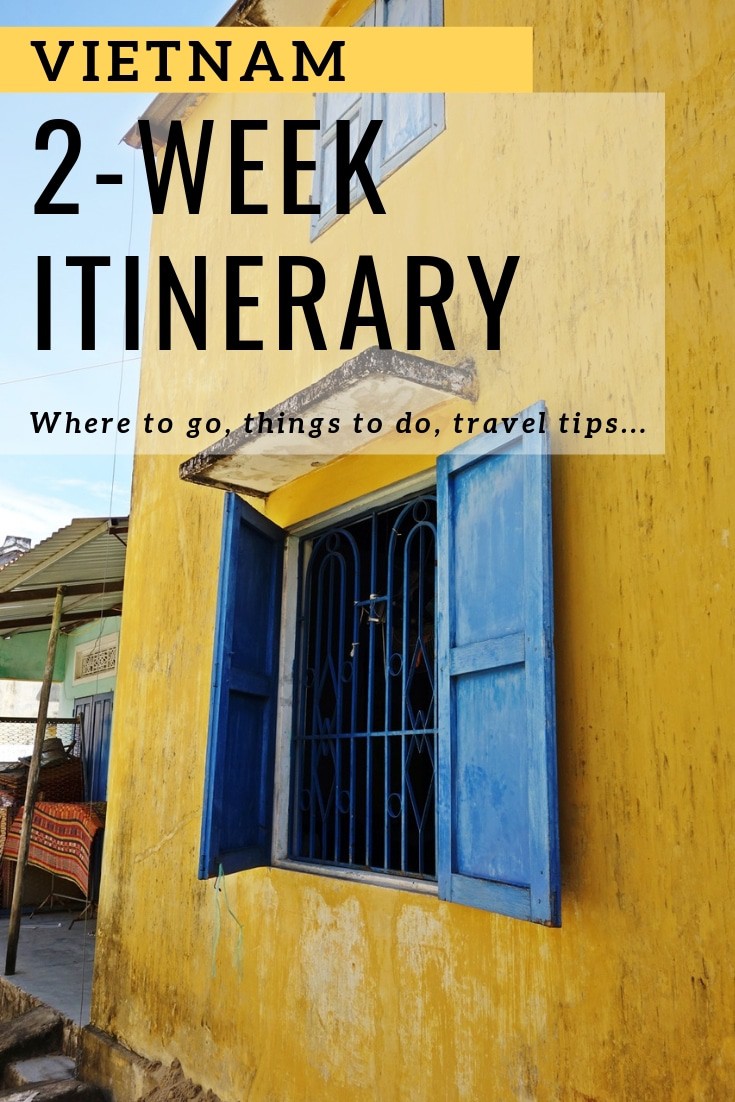
Jump to:
Vietnam Itinerary
2 weeks to explore the best Vietnam destinations!
The itinerary starts in Ho Chi Minh City (aka Saigon), the capital of
You will find a Vietnamese travel destination bonus suggestion at the end of the itinerary.
It's worthwhile to check it out if you can add another 5 days to your travel plans or if you are looking to skip another destination.
I also share everything you need to know for your Vietnam trip, including the best time of the year to visit Vietnam, budget, cost, vaccinations and general vietnam travel tips and safety suggestions.
Ho Chi Minh {3 days}
You'll start your Vietnam Itinerary in Ho Chi Minh City.
Ho Chi Minh, also known as Saigon, is as messy as a city can get but that's where its charm lays.
It's a great place to start your trip and to take in the local culture.
Get lost in the city's small streets, try the food and don't miss on their delicious ice coffee.
In the city center, walk by the Nguyen Hue street, the city hall, the theater, and the Notre-Dame Cathedral, vestiges of the Colonial Era.
The central post office is also a must-see.
There are also a couple of museums you can visit such as the Ho Chi Minh City Museum, the Fine Art Museum, and the War Remnants Museum.
You shouldn't miss HCMC oldest market, the Ben Thanh market, held every day from 7 am to 6 pm.
Amongst the most famous religious sites, you can visit the Chua Ngoc Hoang Pagoda, the Mariamman Hindu temple, and the Giac Lam Pagoda.
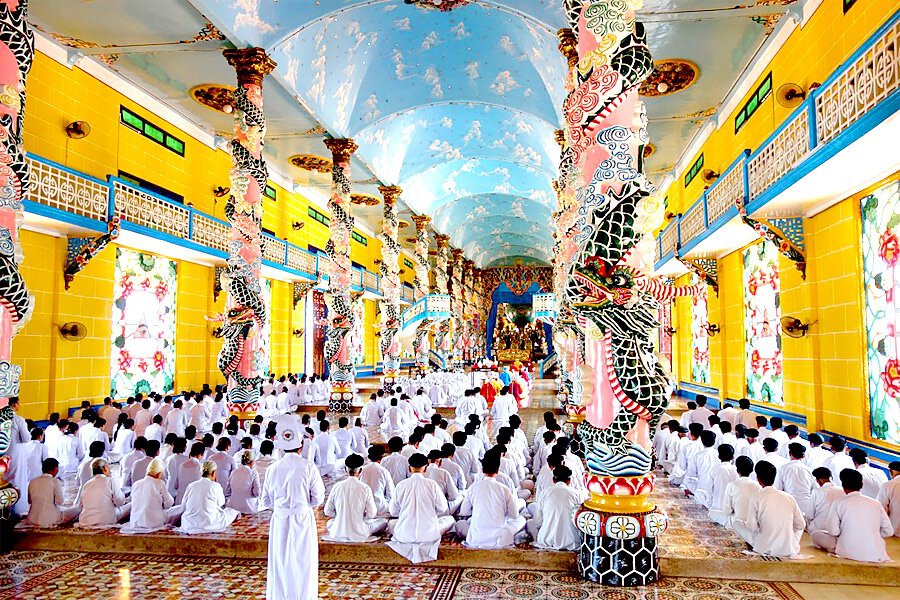
On the next day, take a day trip to visit the famous Cu Chi Tunnels and the Cao Dai Temple in Tay Ninh.
Caodaism, a blend of several religions, appeared in the 1920s'.
Their doctrine is based on the principles of being kind and honest (from Buddhism), of being charitable and of loving others (from Christianity), of being detached from the world (Taoism) while keeping the cult of the ancestors, respect to the family and the communion between the livings and the deads.
Tay Ninh is where the religion first appeared and is home to the main temple, you can find others in central Vietnam.
There are around two millions adepts in Vietnam.
On your way there, visit the Cu Chi tunnels, where Vietnamese soldiers hid and lived during the war.
They'll explain how they managed to live there, and you can visit part of the tunnels.
The tunnels are really tiny, in most part you cannot even stand, it's hard to imagine that people lived there for months.
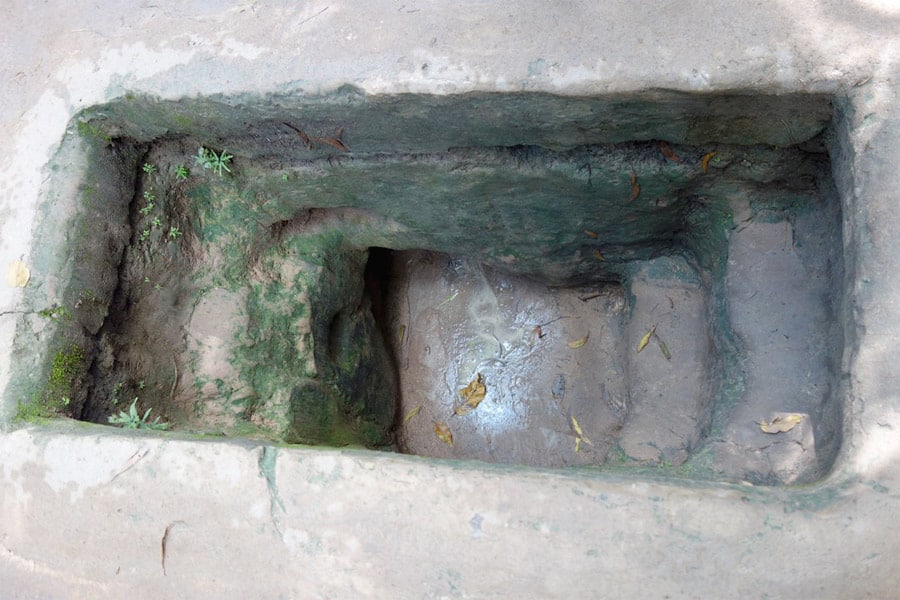
You can either rent a car or go via a tour.
It's good to have a guide, they usually are super knowledgeable and can explain everything to do and about, both the Vietnamese war and the Cao Dai Religion.
You should also visit the Mekong Delta, it's best if you have a couple of days to explore it.
The further you get from HCMC, the more authentic it gets.
If you only have one day, take a tour, choose it carefully as most tours are more of a « shopping » tour for Chinese tourists.
Your next stop is Danang, if you have more time you can make a detour by Dalat and/or stop in Mui Ne. It's best to fly from HCMC to Danang.

Danang {2 days}
Danang in itself is another Vietnamese city, and what's interesting here is what's around.
It's a central location from which you can visit the Marble Mountain, Hoi An, My Son, and the Hai Van pass.
If you're in a tight schedule everything can be visited in one full day, you'll need to rent a motorbike or a car.
In Danang, you can visit the Cham Museum, home to one of the world most beautiful Cham art collection and the Museum of Danang, relating the city's history.
If the weather is nice, take a stroll on the beach.
My Khe Beach is the most popular and considered one of the best beaches in
Around Danang, you should drive by the Hai Van Pass, the best time to visit is in the morning.
The pass is near the shore with, on one side, high cliffs and the sea and, on the other, the mountains.
It's usually in the cloud.
There are also some ruins from the Chinese, French and American time along the way.
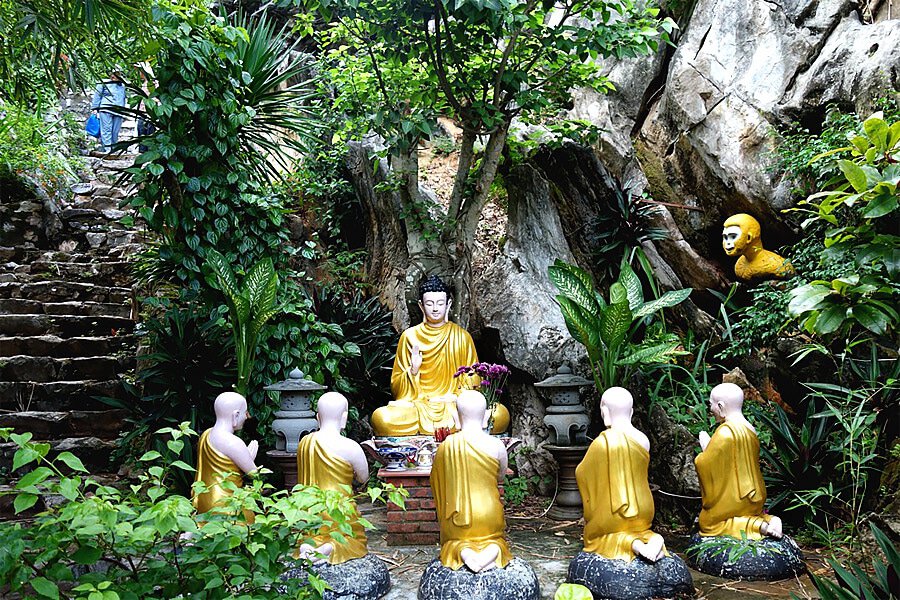
Next, head for the Marble Mountain (Ngu Hanh Son), a group of five limestone hills known for their marble and of religious significance.
Each is named after an element.
Only the Water mountain can be visited.
The climb up there is rewarding, the view is just spectacular.
Along the way, you'll see several pagodas and temples.
Make sure to visit Hoi An, a UNESCO World Heritage Site.
If you have time, you should definitively spend a night in this cute little town, especially during the full moon, when the lantern festival is held.
Long forgotten, Hoi An has been fully restored and boast more than 800 wooden buildings, from merchant houses to temples.
The city is really colorful, and at night, the streets are lighted up by thousands of lanterns.
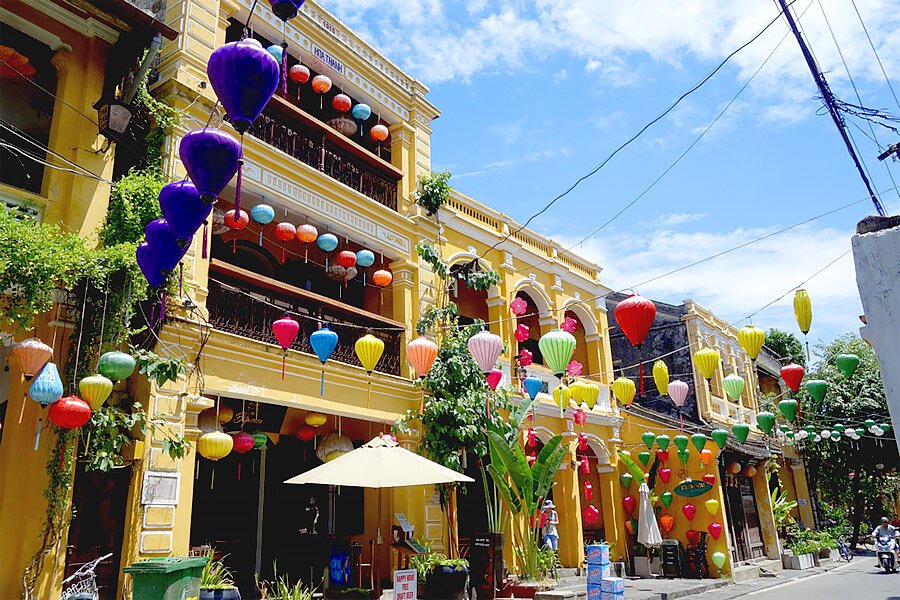
Cars are forbidden in the historical center, which makes it the perfect place to stroll around.
Among the sights you shouldn't miss are: the Japanese Bridge, the Tan Ky, Phung Hung, and Tran houses, the Phuc Kien, Quan Cong, and Trieu Chau Temples.
There are also several museums you can visit to learn more about the city rich history.
You can finish the day visiting My Son.
Built from the 4th to the 14th century, it first served as a religious center then it became the capital of the Cham Empire.
It's the most important Cham archaeological site left in Asia.
Today not much is left standing, a lot has been destroyed by time and during the war.
Some of the structures have been well restored, and the site breathes of peace and tranquility. It's a great place to visit.
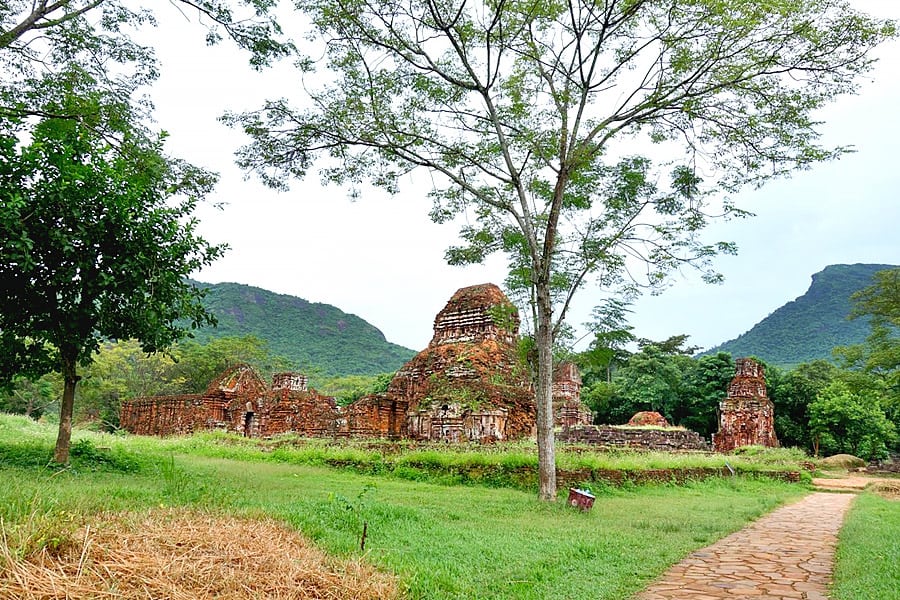
Hue {1 day}
Hue used to be an imperial city and is now a UNESCO World Heritage Site.
The palace's architecture is based on the ancient art of Feng Shui and is pretty impressive.
Built from 1804 to 1833, it's the only imperial city left in Vietnam today.
Hue is also known for its Emperors' mausoleums from the Nguyen Dynasty, sparkled in the nearby countryside.
You can take a boat ride along the Perfume River to visit most of the mausoleums.
In Hue, mausoleums are more than just a grave, they also used to be the emperor's country estate, some of them are huge.
The ones you shouldn't miss are the Minh Mang, Tu Duc, Khai Dinh, and Gia Long Mausoleums.
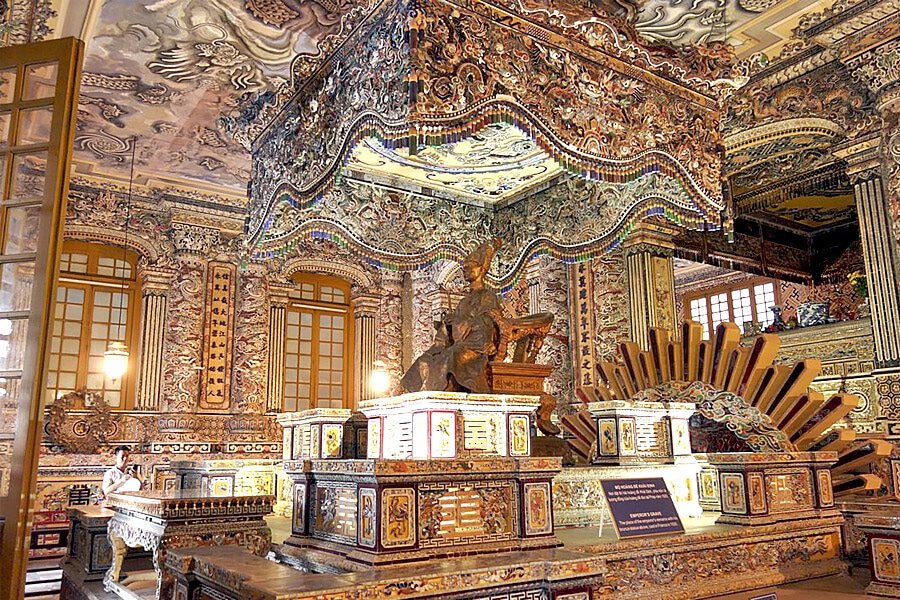
Ninh Binh {2 days}
Nicknamed the Terrestrial Halong Bay, Ninh Binh is one of Vietnam most beautiful place.
It feels like being in a parallel fairytale universe.
Imagine yourself in tranquil countryside, surrounded by verdant paddy fields, twirling rivers and, sparkled here and there, massive karstic rock formations.
Definitely take a boat ride on the river, it will take you through the rock formations to places you cannot reach on foot.
Along the trip, you'll pass by several caves, temples and a movie set (from King Kong).
Nearby you can also visit the capital of ancient Vietnam of Hoa Lu, only two temples remain, and the landscape surrounding them is magical.
Don't miss the Bai Dinh Pagoda either, recently constructed, the Pagoda's proportions are impressive, you'll get a superb view from the top.
Ninh Binh is actually the big city nearby, prefer staying at a guesthouse in Tam Coc, that's where all the main sights are, and it will be much more pleasant.
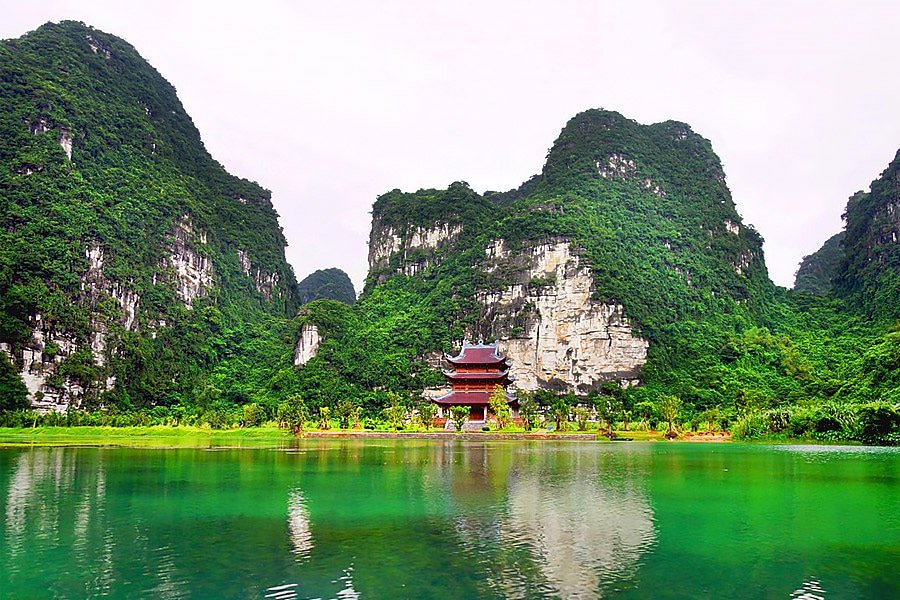
Hanoi {2 days}
Hanoi is a busy city with a rich history and today's capital of
Most of the historic city center has been left untouched, and you'll be able to get a feel of the city's past: a thousand year of Chinese influence and a century of French colonialism.
The town is cosmopolitan, a blend of different cultures creating something unique.
Hanoi is a must-visit destination in Vietnam.
Places to visit:
- The old quarter, built around the 15th century, this neighborhood have been practically left intact during the war.
- The houses and buildings are typical of the local architecture and each street used to be dedicated to a specific trade.
- The French Quarter, have a look at the opera and at the MetropolHanoi Hotel.
- Visit the History Museum, established in an old colonial building, and the Revolution Museum.
- You can also go to the Vietnamese Women Museum, retracing the life of women during the war.
- Farther, have a look at the Saint Joseph Cathedral, built in 1886.
- Don't miss Hanoi's oldest temple: The Literature Temple, dedicated to Confucius and built in 1070.
- The Thang Long Citadel: a UNESCO World Heritage Site, Emperor Ly Thai To moved his court there in 1010, it was the country capital for the next seven centuries.
- Ho Chi Minh Mausoleum and houses.
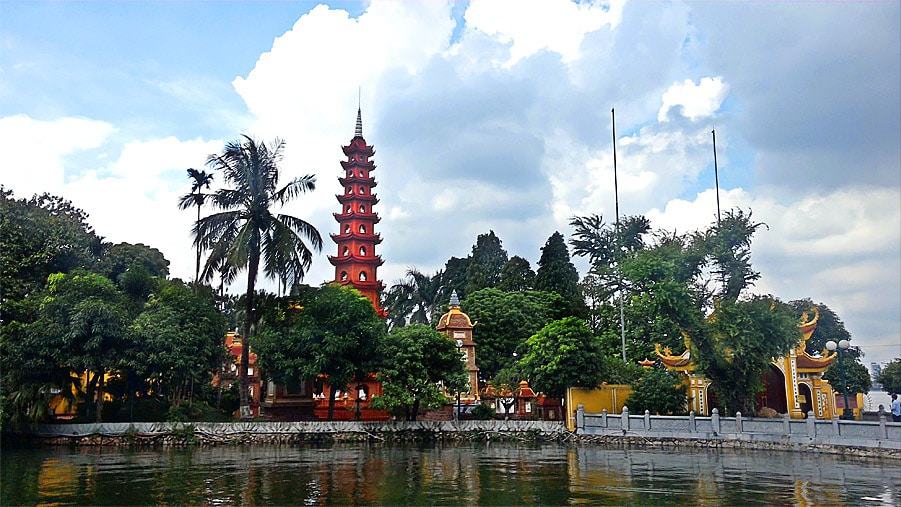
Halong Bay {1 day}
Halong Bay, one of Asia's treasure, counts more than 2000 rock formations, coming out of the sea.
The landscape there is always changing, from one place to another the environment is different.
Ha Long means "the dragon's descent," according to the legend a dragon came down to handle the currents.
He broke down part of the mountain with its tale, and he plunged into the sea, making the water level rose, and only the highest peaks could be seen.
Halong Bay is also a UNESCO World Heritage site, to visit it, book a day trip from Hanoi.
If you have more time to can either organize a two days (or more) cruise or spend a couple of days in Cat Ba and visit Halong Bay from there.
Be careful with the monkeys on some of the islands.
You'll see people feeding them with junk food and taking selfies with them, they'll look harmless, but people often get bitten too.
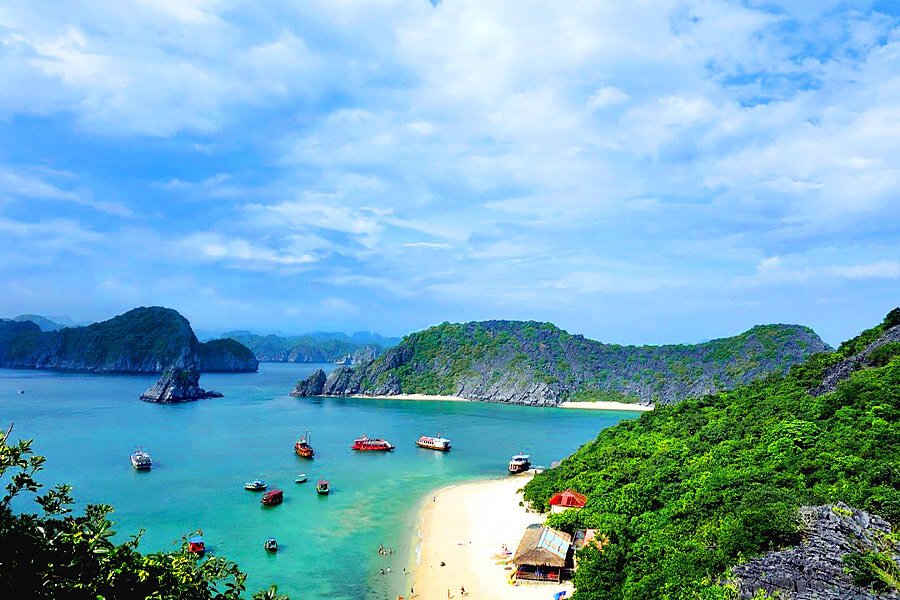
Sapa {3 days}
Sapa, located in the mountains in Northern Vietnam, is known for its lush terraced paddy fields and its ethnic minority tribes.
It's a great place for trekking, they are tons of option depending on your fitness level.
The landscape is breathtaking and the views spectacular.
In Sapa, you can also learn about some of Vietnam's ethnic tribes.
Their traditional culture and lifestyle can still be witnessed.
Most people still dress in traditional clothing and practice traditional ceremonies.
It's interesting to learn about their way of life.
If you're there around September add Sapa to your itinerary.
September is when the rice is ripe, and the paddy fields are green.
Outside of this season, it's all mud, it doesn't look good, you can still go, but it's not really worth it, in my opinion.
It'll look good in July/August too, but the weather is too hot to go trekking.
Arrange a stay in a guesthouse in one of the nearby villages.
They won't be on Booking, but most of them have a facebook page.
They'll come to pick you up at the bus station, meals are included, and you can add treks.
Sapa town is only recommended if you're solo traveling and want to meet other travelers, but the city really isn't a nice place to stay.
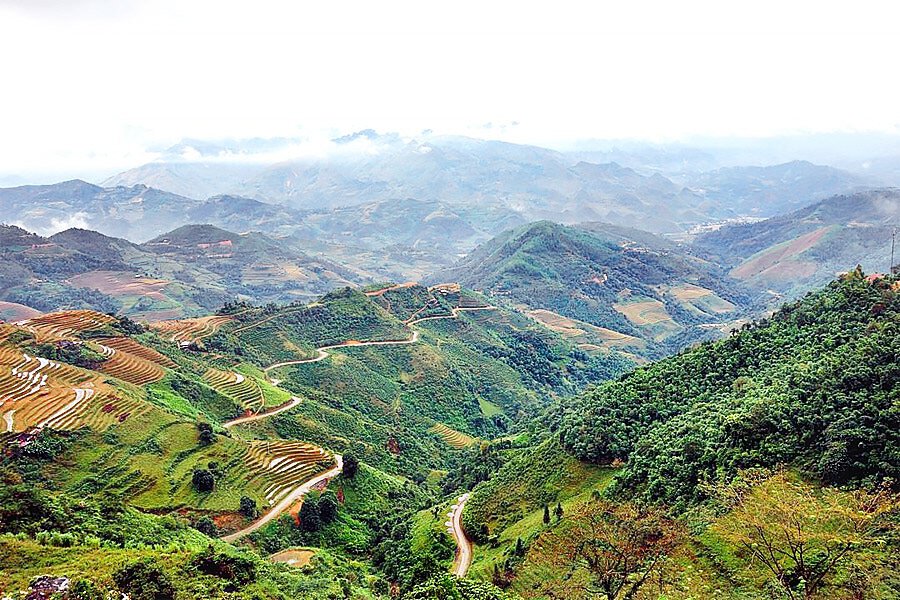
BONUS: Ha Giang Loop {5 days}
The Ha Giang region is one of Vietnam's most beautiful province.
Located in the mountains near the border with China, Ha Giang is known for its breathtaking landscape.
It's also an opportunity to discover a more rural areas of Vietnam and the ethnic minority tribes which inhabit it.
People usually rent a motorbike to do the loop and spend three nights on the way.
If you don't drive, you can hire a driver.
A typical itinerary would be to depart from Ha Giang city, make a stop in Lung Tam, spend the first night in Yen Ming.
The next day head for Ma Le, stop at Sa Phin and you can go all the way to the Chinese border if you want to.
The third day head for Du Gia, hopefully, you can catch a local market either in Du Gia or on the way, in Dong Van.
During high season it might be wise to book your accommodation in advance.
Best time visit
Following my Vietnam Itinerary, if you're planning to go from South to North Vietnam (or the other way around) and want to avoid the rainy season, the best time to travel to Vietnam is from January to April.
Keep in mind that Northern Vietnam can be cold during winter, it sometimes snows in Hanoi, and it gets freezing in the mountains.
Official rainy season in the North is from May to October, in Central Vietnam, from September to November and in the South from June to October.
I was there in October/November, and it rarely rained.
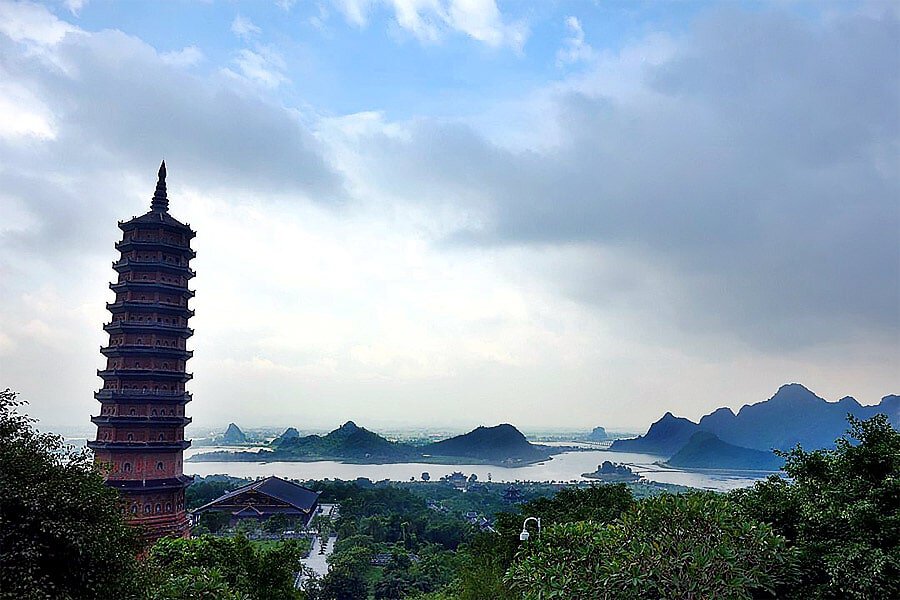
Guide and safety tips
- Vietnam is generally a safe country, common sense apply, be careful with your belongings in big cities, and you should be fine.
- Beware of pickpockets and scooters, they'll pass by you, cut your purse and snatch it.
- Domestic violence is widespread in Vietnam, and everyone turns a blind eye to it, don't interfere, if you see something, just call the police.
- Vietnamese people eat dogs (and a whole lot of other weird meat), be careful of what you eat, and if you're sensitive, avoid the meat section when visiting a market.
- Always ask before taking pictures of people.
- Be careful with monkeys, they look cute, but they will steal your stuff and bite you.
- Vietnam has a lot of mosquitoes diseases such as dengue and malaria, always check beforehand if there's an epidemic or not. To avoid mosquitoes bites, wear pants and long sleeves, use mosquito repellent and avoid wearing black.
- When visiting temples and pagodas, cover your knees and shoulders and remove your hat and sunglasses.
- Don't drink the tap water, even if boiled, even if locals tell you it's ok, even if you have a filter. The water there is full of chemicals.
- Vietnam has a problem with bug beds, always check the last few reviews before booking a room.
- Refer to this handy Vietnam Itinerary =)
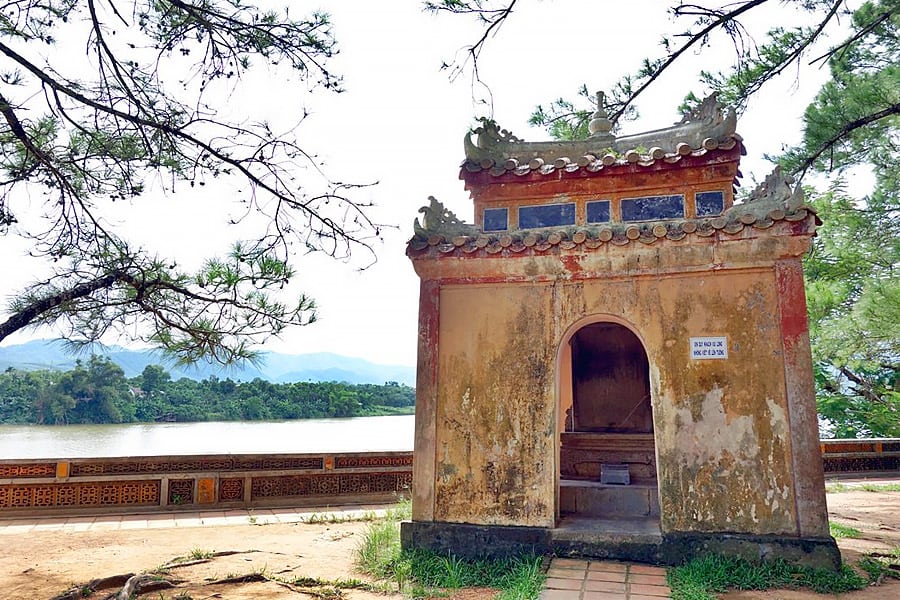
Vaccinations
There's no mandatory vaccination for Vietnam, but it's usually advised to have the basic vaccines (tetanus, polio, diphtheria, hepatitis A and B), the typhoid fever.
Depending on your travel plans, you should get rabies and the Japanese encephalitis vaccines as well.
Malaria and Dengue Fever can appear during the wet Rainy Season in secluded cases.
Visa
To enter Vietnam, you need a valid passport and a visa or a pre-approval for a visa on arrival.
For the Vietnam visa on arrival, you'll need an invitation letter from a government approved travel agency.
Some charge a few bucks
Your passport needs to have a validity of 6 months beyond your planned stay and have at least one blank page left.
The Vietnam tourist visa is valid for 30 days, and you can renew it on place.
You can get a regular tourist visa at any Vietnamese embassy in the world.
You can also get a 30-day e-visa, but it's not available for every port of entry.
If you want to renew it while in Vietnam, it will be way more expensive than with a regular visa.
The vietnam visa cost, for a single entry 1 months visa, comes to about USD 25 for the stamping fee and USD 18 for the Service fee which is the approval letter.
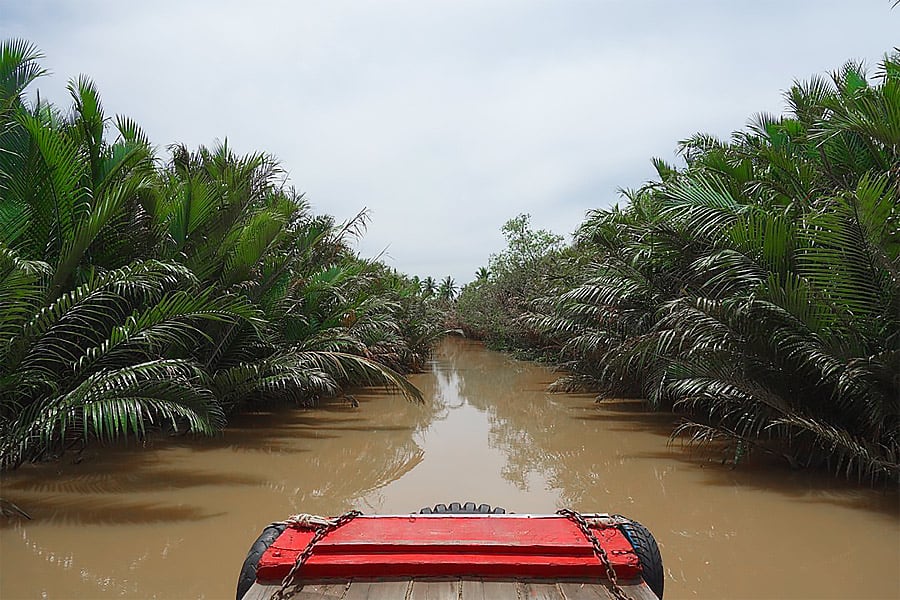
Budget and currency
Vietnam is a cheap country, in most cities, you can find a bed in a dorm for 5 dollars and have a meal for 1 USD.
Budget around 30USD per day, including a hotel room, food, transportation, and tours.
It's relatively easy to exchange money, the exchange rate is usually good for USD.
In April 2019, 1 USD was 23,232 Vietnamese Dongs.
It is illegal to pay in a foreign currency, but some hotels and tourism operators accept USD, their exchange rate is usually terrible.
You'll find ATMs almost everywhere, but you cannot get more than 2 000 000 dongs at once.
Don't forget to tell your bank you're going abroad, so they don't block your cards.
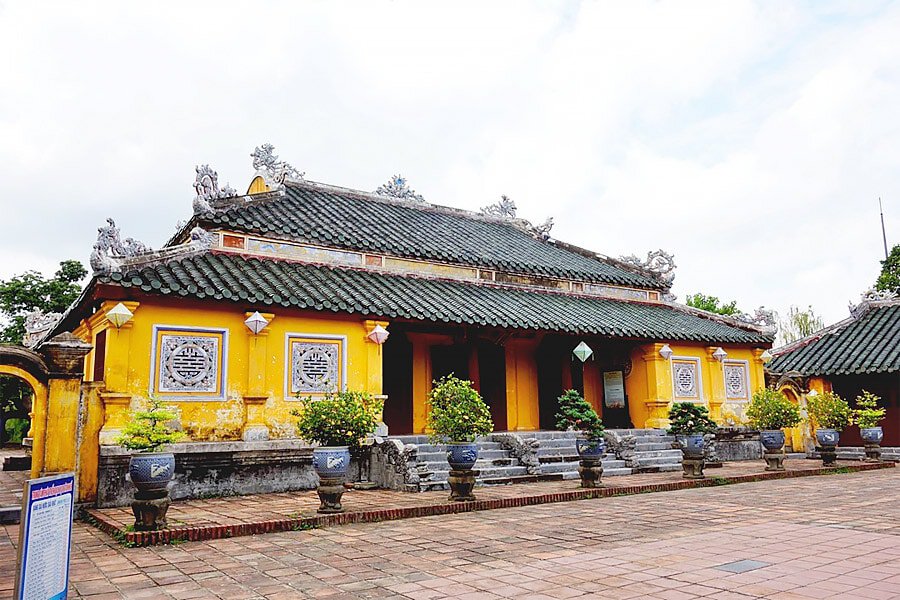
Getting around
In the cities, you can take a cab or an Uber to get around.
You can also use the app Grab (similar to Uber).
Moto-taxis are common and the cheapest way to go somewhere if you're alone.
From city to city, use the buses from the tourist tour companies.
You can buy an open ticket for North and South Vietnam (or the other way around) with all the main stops included.
You just need, each time, to call 24 hours before to book your bus ticket.
Depending on where you plan to stop, you can calculate if the open ticket is cheaper than buying every time a bus ticket.
There are a lot of night buses, and unless you're tall, they are super comfortable, you basically get a bed.
Food Culture
Vietnam has a rich history and therefore an advanced taste palate.
The food has been influenced by former colonial powers.
Vietnamese food has a typical South East Asian side to it.
Some dishes have a distinctive Chinese and French side to it.
The best food to eat in Vietnam:
- Pho
- Banh mi
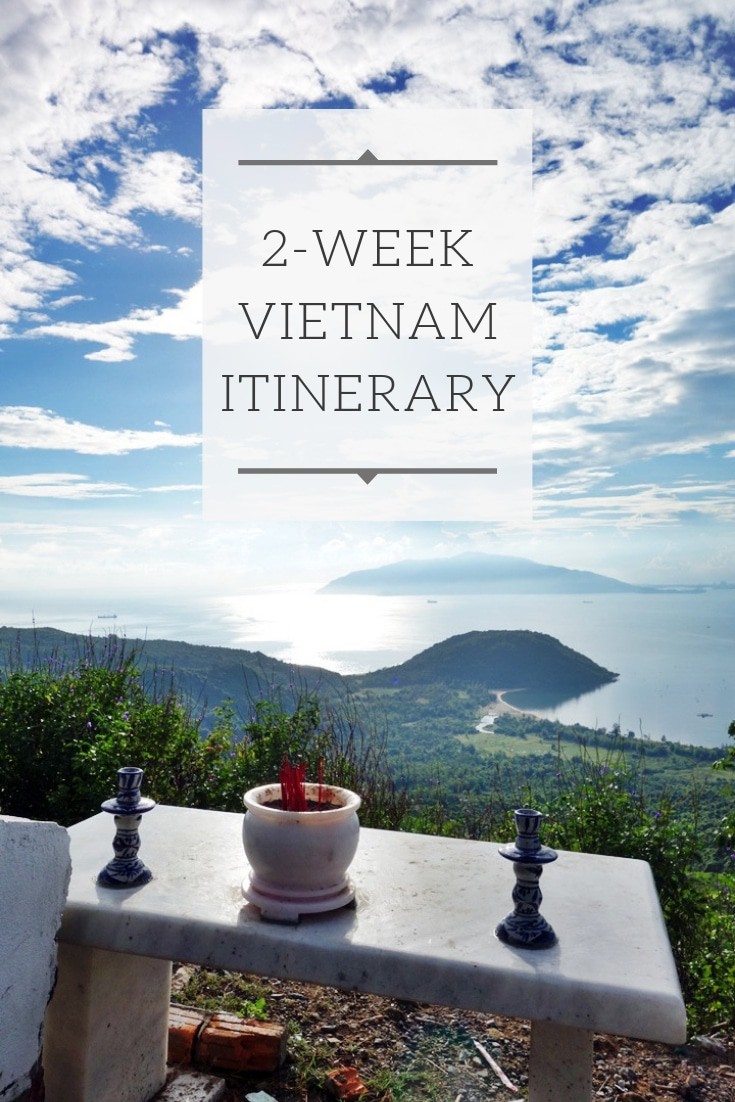
More Travel Destinations to discover in Asia
- Ancient Ayutthaya [Thailand]
- Ajanta Caves [India]

Comments
No Comments